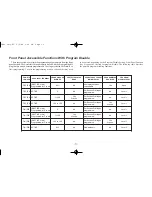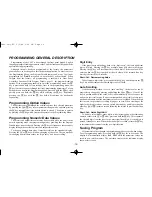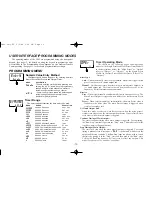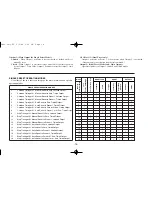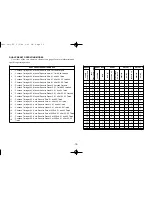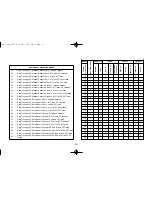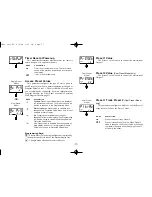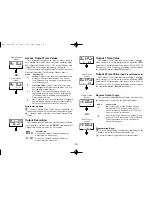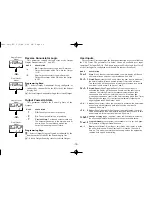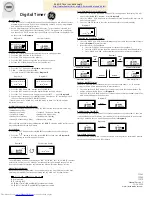
POWER WIRING
AC Versions (C48TXX0X)
AC Power Wiring
Primary AC power is connected to terminals 11 and 12, labeled AC. To
reduce the chance of noise spikes entering the AC line and affecting the timer,
an AC feed separate from that of the load should be used to power the timer. Be
certain that the AC power to the timer is relatively “clean” and within the
specified range. Connecting power from heavily loaded circuits or circuits that
also power loads that cycle on and off, (contacts, relays, motors, etc.) should be
avoided.
DC Power Wiring
(Non PNP Output models)
The DC power is connected to terminals 9 & 10, marked COMM. and DC
OUT/IN. The DC power source must be capable of supplying the unit’s rated
current (150 mA max.) and be within the specified 11 to 14 VDC range. The
C48T has non-volatile memory, that stores information on power down, thereby
eliminating the need for battery back-up.
Note: AC versions with PNP outputs cannot be powered from DC.
Caution: Observe proper polarity when connecting DC voltages.
Damage to the unit will occur if polarity is reversed.
DC Versions (C48TXX1X)
DC power (18 to 36 VDC) or low voltage AC power (24 VAC) is connected
to terminals 11 and 12, labeled DC+ (AC) and DC- (AC) respectively.
Output Power
For DC/ Low Voltage units that do not have PNP current sourcing outputs,
Terminal 10, DC OUT (V
SRC
IN), provides a DC output for sensor power (+12
VDC +/-15%). The maximum sensor current is 100 mA.
For units with PNP current sourcing outputs, this terminal serves a dual
purpose depending on the application’s PNP output voltage level and current
requirements.
1. The terminal may be used as a +12 VDC output for sensor power. In this
case, the PNP output voltage level will be +12 VDC (
±
15%). A maximum
of 100 mA is available for the combination of sensor current and PNP
output sourcing current.
2. If a higher PNP output voltage level or additional output sourcing current
is desired, an external DC supply may be connected between the “DC
OUT (V
SRC
IN)” and “COMM.” terminals. This supply will determine the
PNP output voltage level, and must be in the range of +13 to +30 VDC.
An external DC supply can also provide the additional output sourcing
current required in applications where two or more PNP outputs are
“ON” simultaneously. However, the maximum current rating of 100
mA per individual output must not be exceeded, regardless of external
supply capacity.
Serial Communications Wiring
It is recommended that shielded (screened) cable be used for serial
communications. This unit meets the EMC specifications using Alpha #2404
cable or equivalent. There are higher grades of shielded cable, such as, four
conductor twisted pair, that offer an even higher degree of noise immunity.
Refer to RS-485 Serial Communications, page 24, for wiring and operational
procedures.
Run/Stop Input
The RUN/STOP input can be configured as a current sinking (active low) or
current sourcing (active high) input using the User Input plug jumper. The timer
will RUN when RUN/STOP (terminal #7) is connected to the active logic level.
See chart on Page 8, for active and inactive voltage levels for each User Input
plug jumper setting.
In some operating modes, the timer will automatically STOP timing when the
main output is triggered. (See Timer Operating Modes in the programming
section, Page 13.) In these modes, the RUN/STOP input can be used to restart
the timer by momentarily taking the input to the STOP state (inactive logic
level) and then back to the RUN state (active logic level). Cycling the
RUN/STOP terminal, however, will not reset or affect the output(s).
-7-
C48t-im.QXD 3/5/04 3:28 PM Page 7

















